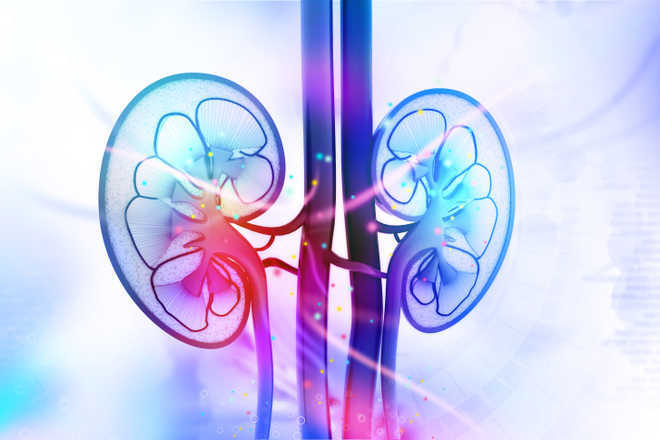LONDON: In a first, scientists have successfully produced human kidney tissue within a living organism which is able to produce urine, a significant milestone in the development of treatment for kidney disease.
Kidney glomeruli — constituent microscopic parts of the organ — were generated from human embryonic stem cells grown in plastic laboratory culture dishes containing a nutrient broth known as culture medium, containing molecules to promote kidney development.
They were combined with a gel like substance, which acted as natural connective tissue – and then injected as a tiny clump under the skin of mice.
After three months, an examination of the tissue revealed that nephrons: the microscopic structural and functional units of the kidney – had formed.
The new structures contained most of the constituent parts present in human nephrons – including proximal tubules, distal tubules, Bowman’s capsule and Loop of Henle.
Tiny human blood vessels – known as capillaries – had developed inside the mice which nourished the new kidney structures, according to a study published in the journal Stem Cell Reports.
“We have proved beyond any doubt these structures function as kidney cells by filtering blood and producing urine – though we can’t yet say what percentage of function exists,” said Sue Kimber from University of Manchester in the UK.
“What is particularly exciting is that the structures are made of human cells which developed an excellent capillary blood supply, becoming linked to the vasculature of the mouse,” Kimber said.
“Though this structure was formed from several hundred glomeruli, and humans have about a million in their kidneys – this is clearly a major advance,” Kimber said.
However, the mini-kidneys lack a large artery, and without that the organ’s function will only be a fraction of normal.
So, the researchers are working with surgeons to put in an artery that will bring more blood the new kidney.
To test the functionality of the new structures, the team used Dextran – a fluorescent protein which stains the urine- like substance produced when nephrons filter the blood, called glomerular filtrate.
The Dextran was tracked and detected in the new structures’ tubules, demonstrating that filtrate was indeed being produced and excreted as urine.




 Driving Naari Programme launched in Chandigarh
Driving Naari Programme launched in Chandigarh































